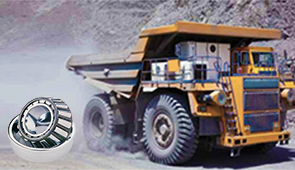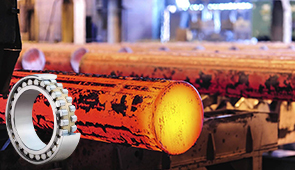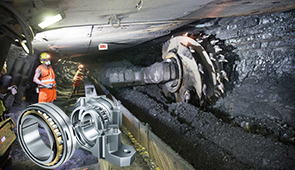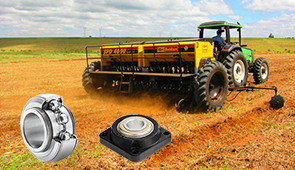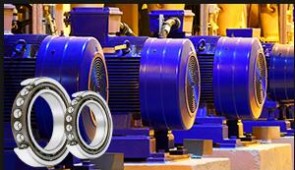Understanding Motor Shafts: Types, Materials, and Best Practices
Motor shafts grant maximum power and reliability to almost the entire mechanical system array-from industrial machinery to common home appliances. Though simple components, they form the backbone for transferring torque and rotational motion, marking an indispensable intervention into other applications. With improper choice of type or material of motor shaft, one can jeopardize premature wear, mechanical failure, and inefficiency. This article will explore the very basics of motor shafts, the types that are found, commonly used materials in their construction, and recommendations for suitable selection-based maintenance. If you are an engineer, a manufacturer, or an enthusiast, this’ll charm technical insights so you can maximize your machines’ performance and longevity.
Types of Motor Shafts
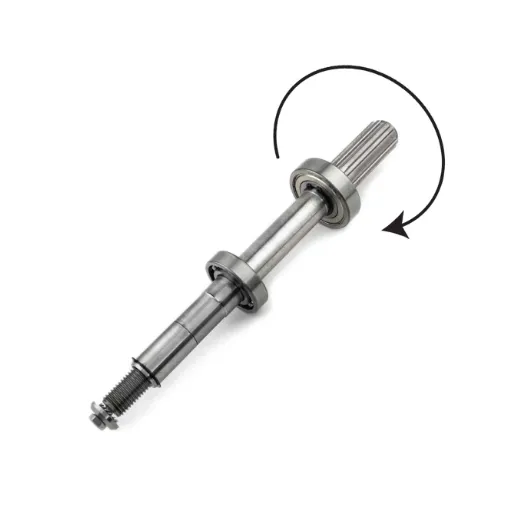
Solid Motor Shafts
Solid motor shafts are one of the basic elements used in many industrial and mechanical systems; therefore, they need to be strong, with reliable performance. Such shafts are generally made as a single piece of material, and hence, uniform strength prevails along their length. They are massively used where there is a huge load to bear, or the forces of torsion are high, for instance, in heavy machinery, conveyor systems, and high-powered motors.
Materials considered for solid motor shafting are carbon steel, stainless steel, and alloy steel, depending on the purpose of the work. Carbon steel gives a good trade-off between strength and cost, making it a general-purpose grade. Stainless steel is used where corrosion resistance is required, for instance, in marine or chemical environments. Alloy steel, often heat-treated, confers extra strength and durability when it is subjected to heavy stresses in general.
In addition to in-use dimensions, shafts are also manufactured with close tolerances for the diameter and surface finish in order to reduce friction and wear. If maintained properly by lubrication and periodically checking for misalignment or damage, their life span will be further increased. Solid motor shafts are a generally accepted design solution, simple, and functional for those applications that require utmost strength and reliability.
Hollow Motor Shafts
Hollow shafts are an innovative alternative to solid shafts, offering numerous advantages in weight reduction and material usage. In hollow shafts, material is removed from the inside, keeping sufficient structural integrity while being light and easy to handle. This reduction in weight decreases inertia, improving energy efficiency and performance in high-speed applications.
The excellent strength property of hollow shafts is due to their use of unique materials such as selected high-grade alloys and precision engineering. They are best in applications where maximum torque is needed while confined in two or three dimensions in space, easily giving way to the passage of wiring/gases or fluids/other components inside the hollow in the shaft, thus making it a multipurpose feature required in complex machinery.
On the other hand, hollow motor shafts require stringent manufacturing tolerances and tests to assure consistent quality and design reliability. They must also be strictly rotationally balanced to consider stress distributions properly and avoid failure in dynamic loads. When well designed and maintained, hollow motor shafts working procedures are suitable for industries demanding high performance with a reduction of materials. Such a design perfectly suits modern engineering without compromising the toughness or functionality of an implement.
Stepped and Keyed Shafts
Since stepped shafts feature a series of different diameters from one end to the other, they accommodate several components like bearings, gears, and couplings. This allows components to be accurately located and assists in sharing loads along the shaft to lessen the stress concentration. Such shafts are used when compact assemblies and very accurate alignment are required, like automotive systems, heavy machinery, etc.
The keyed shaft, however, incorporates one or more slots (called keyways) in parallel along the shaft to accommodate a key that locks the rotating element, such as a pulley or gear. This stops relative rotation between the shaft and the mounted component and allows for effective transmission of torque. The key-and-keyway method is best characterized by applications requiring efficient transmission of very high torque levels, during which localized stress concentrations occur and must be taken into account during the design process.
Both designs aim to maximize their function in given applications and form a need to be precisely engineered to avoid mechanical failure. Therefore, a valid selection of materials, heat treatment processes, and periodic inspections has to be observed for stepped and keyed shafts to ensure reliability and durability. Also, with the advancement of design software, stress distributions can be studied and applied more effectively, thus allowing for ergonomically designed shafts with high safety standards and efficient designs meeting industrial requirements.
Materials Used in Motor Shaft Construction
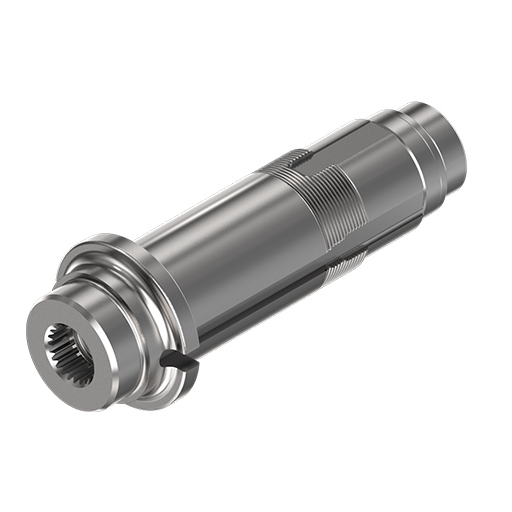
Stainless Steel: Advantages and Applications
Motor shafts were largely built from stainless steel because of its valuable juxtaposition of mechanical properties and resistance to environmental factors. Having a minimum of 10.5% by weight chromium as their major alloying element, stainless steels possess an oxide film that can repair itself and thus confer excellent corrosion resistance, even in punishing industrial environments. Hereunder are the top 5 advantages and applications of stainless steel in motor shaft construction:
- Corrosion Resistance: Stainless steel is infamous for its resistance to corrosion by moisture, chemicals, or saline environments. This nature is welcome for marine and chemical processing plants and outdoor machinery applications. For instance, grades such as 316 were specially crafted to resist chlorides.
- High Strength-to-Weight Ratio: Granted that the tensile and yield strength provided by stainless steel is incomparable with other metals such as carbon steel, this lightness becomes a plus point. This feature is well-suited especially for motor shafts that must attain high-performance buildup into durability while retaining less mass.
- Heat Resistance: Some of the stainless steel grades, such as 310 and 430, keep their mechanical integrity when subjected to higher temperatures. This property gives the stainless steel an edge in being chosen for motor shafts in the high-temperature environs of a turbine or an engine.
- Negligible Maintenance: The same protective oxide layer that stands against corrosion also lowers the maintenance costs: a win-win situation for any industry with stainless steel components valued for durability with little upkeep, such as food-processing or pharmaceutical apparatus.
- Flexibility in Design: Stainless steel can be fabricated into any form, be it complex. It can also be procured as rods, sheets, bars, or the like. Such versatility accommodates the design of motor shafts to meet precise engineering requirements, be it for precision instruments or heavy industrial machinery.
When choosing stainless steel for motor shafts, having a clear insight into the environmental and mechanical requisites of the application is paramount. Engineers often tend to rely on detailed material specifications and testing standards, for instance, ASTM or ISO constitute.
Carbon Steel: Benefits and Drawbacks
Carbon steel is widely used in industrial applications, largely because of its strength and durability, and being cheapness. In general terms, the material is made by alloying iron with carbon, with grades having up to 2.1% carbon by weight. It has tensile strength and hardness, two characteristics that are never superseded and thus used in structural works, construction, and other demanding environments. Furthermore, carbon steel is very versatile in terms of machining, welding, or heat-treatment to suit any kind of situation. Its relative cheapness makes it widely discussed and used in all industries.
Nevertheless, there are some defects of carbon steel, mainly related to corrosion and rusting in some environmental conditions. Carbon steel cannot prevent corrosion because it is devoid of chromium, unlike stainless steel. This limitation is then filled in by some protective coats, like galvanizing, or regular maintenance is needed to forestall corrosion of carbon steel, especially when it is employed in a highly humid or chemically reactive environment. Another characteristic of high-carbon steels is that better strength leads to lower ductility and increased brittleness; therefore, problems are encountered in any applications that call for flexural characteristics or impact resistance.
An engineer, in an attempt to best use any steel, evaluates the positives and negatives of the different grades of steel. Low-carbon steel is very ductile and easy to process, but offers less strength than high-carbon steel. The high-carbon steels are used for applications where more wear occurs and thus develop into shaping tools, blades, and the like, but they are difficult to handle and process when trying to overcome their effects of brittleness. Hence, being combined with modern heat treatment and surface coatings to resist corrosion, carbon steels still form a very good candidate in all aspects of engineering and manufacturing.
Manufacturing Processes for Motor Shafts
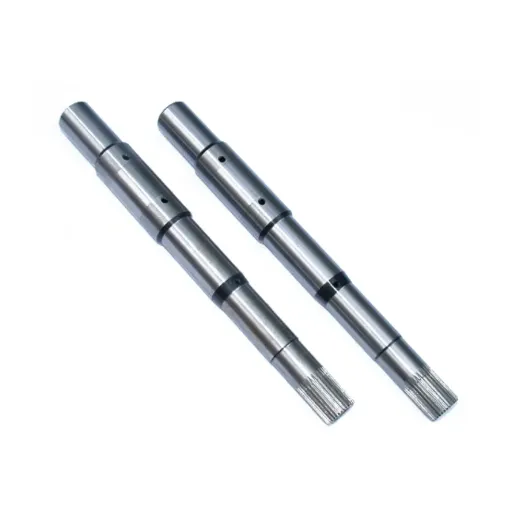
Precision Engineering Techniques
Precision engineering processes have revolutionized motor shaft manufacturing to realize improved accuracy, durability, and performance standards. Emphasizing working with high technologies, such as CNC machining, enables working with ±0.001-inch tolerances on motor shafts. Such highly accurate production is required for surfaces with utmost friction-free rotation. Laser cutting and wire EDM processes are also used so that finishes and intricate geometries are achieved that had been considered impossible with the manual method.
Material selection is thus a very crucial step in the precision engineering of motor shafts, where alloy steels and composite materials are usually used for their properties of high-strength-to-weight conversion and resistance to fatigue. Surface treatments are then applied to enhance the surface hardness of the component and wear resistance, with the treatments also ensuring that stress concentrations are minimized at the surfaces, which can lead to mechanical failure.
Non-destructive testing (NDT) is often incorporated into these manufacturing processes to ensure the structural integrity of the motor shafts. Ultrasonic testing and magnetic particle inspection are some of the methods used for identifying sub-surface flaws, cracks, or inclusions to make sure they conform to strict industry standards. With the modern development of AI-driven analytics and robotics, automation of these processes is taking quality control and throughput to new heights of efficiency and reliability.
Quality Control Standards
In the whole manufacturing gamut, ensuring adherence to stringent quality control parameters is an absolute must, especially for motor shafts, which are indeed critical components. Standards under ISO 9001 and AS9100 carry an implicit demand for ongoing observance of quality in terms of documented procedures and testing. These standards require the periodic calibration of the inspection equipment so that by increasing the variability of measurement, product integrity is not compromised. A very detailed quality management system (QMS) grounds the very basis of operations, guiding its people in a structured way on how to control processes, conduct audits, and track defects so that the process can confidently yield a few out-of-tolerance products meeting stringent performance criteria.
Increasingly, non-destructive testing methods are also employed for better quality control over manufacturing. One seeks perfecting radiographic testing (RT) and eddy current testing (ECT) for internal inspection purposes, along with computed tomography (CT). These technologies allow the manufacturers to check for defects in the materials that cannot be detected by conventional means, previously damaging products at a level of detail never met. These designs even allow for anomalies to be flagged and remedial measures taken immediately, on the spot, preventing defective products from reaching the end user. This is of particular importance in ensuring a high level of quality in industry sectors where failure carries a remote or direct risk of catastrophic consequences-the aerospace, automotive, and energy industries.
With what are now digital technologies at hand, enforcing quality control standards has become truly nimble. Predictive analytics programs, powered by AI, review large data sets gathered at various inspection stages, looking for trends and warning signs of impending failure so that preventive action can be implemented. Robotics-enhanced quality control boosts the speed and scales the thoroughness of inspections with minimal human interference. Together with ongoing supplementary training for the workforce and up-to-date industry standards to comply with, these tools ensure that suppliers stay competitive while offering technically trustworthy products that satisfy corporate and client expectations for quality.
Emerging Trends in Shaft Manufacturing
Shaft manufacturing has been a fast-evolving technology with innovations in the labyrinth of modern technology for increasing precision and efficiency in manufacturing processes. One of the top trends is the use of high-tech composite materials, such as carbon fiber-reinforced polymers, which offer better strength-weight ratios compared to steel or alloys. Depending on a decrease in shaft weight, these composite materials provided performance improvements whenever higher rotational speeds in the automotive or aerospace industry were involved.
On the other hand, additive manufacturing (known popularly as 3D printing) is being widely accepted into prototyping and production of complex geometries. This reduces lead time and waste and allows manufacturers to customize shaft designs with complex features that were previously impossible with conventional methods.
Then there’s automation, which really helps CNC machining to be more and more advanced. Modern multi-axis CNC technology allows highly accurate shafts to be made with tighter tolerances and better surface finish. AI-enabled predictive maintenance systems are another useful resource, increasing machine uptime through early detection of wear and tear.
Smart factories further benefit from IIoT-based solutions that allow real-time monitoring and optimization of manufacturing processes. IIoT sensors fitted into machinery capture actionable data on various aspects like temperature, vibration, and stress, which are then used for dynamic quality control and operational optimization. These trends form an environment for setting new benchmarks in shaft manufacturing, where innovation meets the ever-rising demands of modern industries.
Choosing the Right Motor Shaft
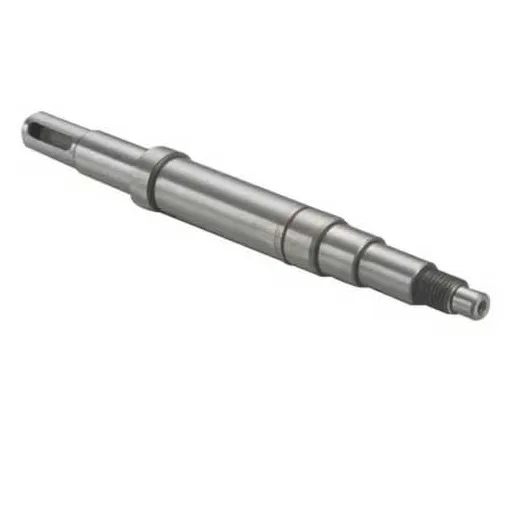
Factors to Consider: Load Capacity and Rotational Speed
Loading and speed capacity are vital selection factors affecting shaft output and life. Load capacity is the ability of a shaft to endure certain forces like axial, radial, and torsional loads during operation, while an overloaded shaft might suffer deformation, wear, or even abrupt failure. Proper assessment of load conditions, both static and dynamic, must be considered to ensure the shaft meets operational requirements concerning material and dimensions.
On the other hand, rotational speed, given in revolutions per minute (RPM), must match the motor’s output speed. From a vibration standpoint, high-speed operation turns out to be critical as fatigue, thermal expansion, and vibration control concerns arise. The engineering calculations also have safety factors for any unforeseen operating changes to assure reliable operation. Therefore, for the best results, speed and load must be matched with material properties such as tensile strength, yield strength, and fatigue resistance.
Nowadays, design validation is often carried out by simulating operating conditions using FEA and CFD analyses. Combining these predictive analytical techniques with real-time monitoring of equipment performance goes a long way to predicting the likely area of failure and ensuring more reliability in tough industrial environments.
Environmental Conditions and Shaft Dimensions
The operational life and design performance of shafts in industrial applications are highly influenced by the environmental conditions. Design and material selection must thus consider temperature, humidity, particulate contamination, and corrosive agents. To illustrate, materials offered for use in highly corrosive conditions need to have corrosion-resistant coatings or should be of an alloy, such as stainless steel or titanium, that inherently resists corrosion.
Dimensions of shafts, namely their lengths, diameters, and tolerances, dictate all sorts of mechanical performance under varying conditions of environment and load. The diameter of the shaft must be fit to transmit the required torque and to resist bending and deflection, should there be a lack of alignment or uneven loading. Advanced tools provide simulations at very precise levels, such as Finite Element Analysis (FEA): these can optimize thicknesses or surface finishes for a few specific cases. Compatibility with lubrication systems, heat dissipation capacities, and damping of vibrations must be evaluated so as to either supplement or counterbalance environmental factors; all according to environmental stress factors and widely accepted standards such as ISO 281 or AGMA Q10.
Nowadays, designing reliable systems means an integrated approach linking dimensioning with environmental adaptation while offering a real-time monitoring facility, when and where necessary. Adopting advanced materials and highly precise modeling techniques enables engineers to identify potential failure zones and strategize towards their elimination while maintaining the highest efficiency and operational safety.
Maintenance Tips for Motor Shafts
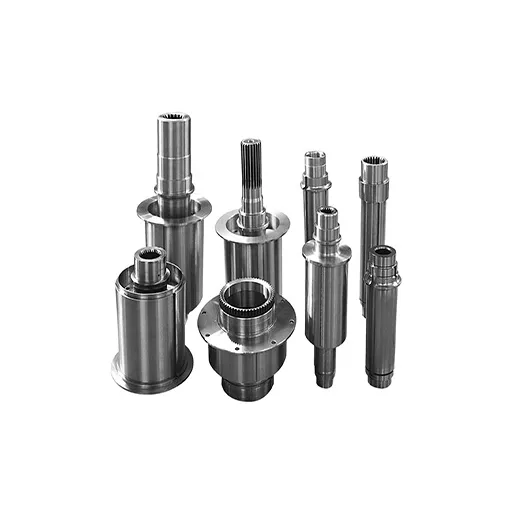
Lubrication Techniques for Longevity
Good lubrication is possibly the most vital factor to maximize the service life of motor shafts. Technically speaking, it is essential to apply the appropriate lubricant in each case. The operating temperature, load conditions, and speed of the shaft are factors to be considered when selecting the appropriate lubricant. Synthetic lubricants are generally preferred owing to their greater thermal stability and longer service periods, especially when considered for applications that are subject to a high degree of stress or require an optimum level of performance.
Maintenance intervals are set up to prevent the degradation of lubricants and to allow for their even distribution. This includes checking for lubricant viscosity, contamination, and replenishment or replacement. Real-time monitoring systems that actively evaluate lubricant condition and provide alerts for when services are due may even improve the process in order to reduce downtime and avoid unnecessary wear on the motor shaft, which are obvious contributors to system reliability and efficiency.
In addition to applying correct methods during lubrication, the over-lubrication of a system may cause problems, such as fluid friction, overheating, leaks, while under-lubrication will cause metal-to-metal contact, hence enhancing the wear of components. Precision lubricating equipment, such as automatic grease dispensers or manual applicators for particular machinery, can guarantee consistent results. In fact, adapting lubrication methods to operational and environmental requirements will greatly enhance motor shaft life and reduce the total maintenance cost.
Regular Inspections and Performance Checks
Routine inspections and performance checks represent one of the paramount maintenance strategies for machinery and mechanical systems. Early deterioration signs call for inspections in cases of wear, misalignment, or corrosion, any one of which may end up in a sudden failure that leads to an expensive downtime. Assessments should be made on main components like bearings, sealing systems, shafts, and gears since these generally undergo the highest stress levels and give a primary indication of the general health of a system. Great technical tools for obtaining precise data are vibration analysis and thermal imaging cameras, which measure operational conditions not immediately visible to the naked eye.
Performance checks sit higher than routine inspections in that they measure the actual quantity of output produced or the efficiency exhibited by the equipment in question, in conformity with a set of prescribed standards. Real-time data on process parameters such as temperature, pressure, rotational speed, and power consumption can be gathered by operators using sensors and IoT-enabled monitoring systems. For instance, changes in motor speed or increased energy consumption over time may serve as potential symptoms of excessive load or bad alignment. Accordingly, ensuring automation collects such data consistently allows for in-depth trend analysis, thereby facilitating appropriate prioritization for preventive maintenance scheduling and minimizing disturbances to the system.
An inspection plan must be structured according to the specific requirements of each piece of equipment, as well as the environmental conditions in which it works. Equipment operating under high-vibration or dusty conditions is subject to more rigorous inspection schedules than those in controlled environments. It is of utmost importance that inspection documentation be maintained, so as to create a worthy historical data bank for decision-making. The combination of these approaches with the latest monitoring technology guarantees optimization of machine performance and life extension of vital components for operational efficiency in the long run.
Frequently Asked Questions (FAQ)
Q: What exactly are motor shafts, and what is their relevance in electric motors?
A: Motor shafts are highly important components inside an electric motor, as they act as the rotating part that transmits torque to the rest of the machinery from the motor. The design and the materials used in making a motor shaft affect the performance, reliability, and efficiency of the motor.
Q: What kinds of steel are used to make motor shafts?
A: Components made of varying kinds of steel from 4140 to 1018 and 1045 can be used as motor shafts. Each type exhibits certain properties such as strength, toughness, vigor, and machinability, which fit certain types of motor shaft applications.
Q: How does the diameter of the motor shaft affect motor performance?
A: Diameter is an important factor that affects the motor shaft performance due to the strength it offers to withstand stress and torque throughout the operation. A larger diameter can permit a shaft to carry enhanced loads at the expense of added mass, which could degrade the motor performance.
Q: How is precision important to motor shaft manufacturing?
A: The high precision in the manufacture of motor shafts leads to enhanced fit and alignment within the motor assembly, thereby lowering vibration and wear over time. This helps to build up longevity and efficiency in the motor operation itself.
Q: Describe the function of custom shafts in multiple configurations?
A: Custom shafts in many configurations allow manufacturers to customize the motor shaft to meet particular application requirements, such as differing load capacity, dimensions, and materials. This helps to achieve maximum performance in superior operating environments.
Q: What are the benefits of aluminum motor shafts?
A: Aluminum shafts have the advantage of being lightweight with good corrosion resistance, making them suitable for use in applications where weight is nature of concern. These shafts could also be machined for precision, although not give the strength comparable to steel shafts.
Q: How does the machining of motor shafts affect their quality?
A: Machining, such as grinding, polishing, and normalizing, influences the surface hardness and overall quality of motor shafts. High-grade machining guarantees greater dimensional accuracy, which must be provided to allow for the best motor performance.
Q: Which factors do I have to consider when choosing a motor shaft material?
A: The shaft application, operating environments, required strength, and wear resistance are what have to be considered when selecting a motor shaft material. It is quite common for the selection procedure to include an evaluation of steel alloys such as 4140 and 1018 based on mechanical properties and value for money.
Q: How does heat treatment contribute to a longer working life of the motor shaft?
A: Processes like gas nitriding make motor shafts harder and tougher so they can sustain high stresses and stay further in the field. Such a treatment is vital to assure that the motor shaft can serve under very harsh operating conditions.
UCTH213-40J-300 with Setscrew(inch)
CNSORDERNO: Normal-duty(2)
TOGN: UCTH213-40J-300
SDI: B-R1/8
SD: 2 1/2
UCTH212-39J-300 with Setscrew(inch)
CNSORDERNO: Normal-duty(2)
TOGN: UCTH212-39J-300
SDI: B-R1/8
SD: 2 7/16
UCTH212-38J-300 with Setscrew(inch)
CNSORDERNO: Normal-duty(2)
TOGN: UCTH212-38J-300
SDI: B-R1/8
SD: 2 3/8
UCTH212-36J-300 with Setscrew(inch)
CNSORDERNO: Normal-duty(2)
TOGN: UCTH212-36J-300
SDI: B-R1/8
SD: 2 1/4
UCTH211-35J-300 with Setscrew(inch)
CNSORDERNO: Normal-duty(2)
TOGN: UCTH211-35J-300
SDI: B-R1/8
SD: 2 3/16
UCTH211-34J-300 with Setscrew(inch)
CNSORDERNO: Normal-duty(2)
TOGN: UCTH211-34J-300
SDI: B-R1/8
SD: 2 1/8









